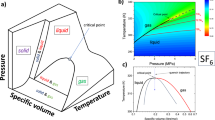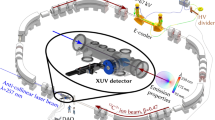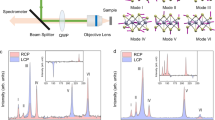Abstract
ACCORDING to the theory of the Raman effect, the depolarisation Ï of the Raman lines in gases and liquids should, when observed at right angles to the natural incident light, never exceed the value ρ = 6/7. Whilst values of ρ≥1, which have frequently been observed, could be ascribed to observational errors, a value of ρ = 2, which has been estimated by Bhagavantam1 for one line of liquid sulphur trioxide, called for a further investigation. I have carried out this work,2 using polarised incident light with the electric vector perpendicular to the plane through the light source, scattering object and observer. Denoting by σ the depolarisation for this mode of observation, there exists between σ and ρ the relation σ = ρ/2 - p;. It is clear, that, whilst the theoretical limit for σ is ¾, one should get σ = ∞ in the case cited by Bhagavantam. This was clearly disproved by the experiment, which gave a value of σ not exceeding unity.
This is a preview of subscription content, access via your institution
Access options
Subscribe to this journal
Receive 51 print issues and online access
$199.00 per year
only $3.90 per issue
Buy this article
- Purchase on SpringerLink
- Instant access to full article PDF
Prices may be subject to local taxes which are calculated during checkout
Similar content being viewed by others
References
Ind. J. Phys., 5, 59; 1930.
Helv. Phys. Act., 4, 130; 1931.
NATURE, 128, 795, Nov. 7, 1931.
Author information
Authors and Affiliations
Rights and permissions
About this article
Cite this article
BÄR, R. Atóms and Molecules as Fitzǵerald Oscillators. Nature 129, 505 (1932). https://doi.org/10.1038/129505a0
Issue date:
DOI: https://doi.org/10.1038/129505a0



